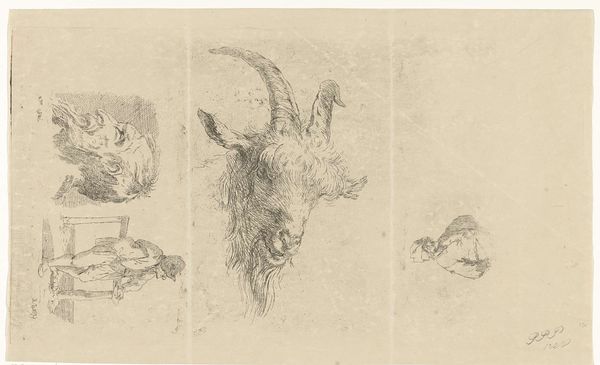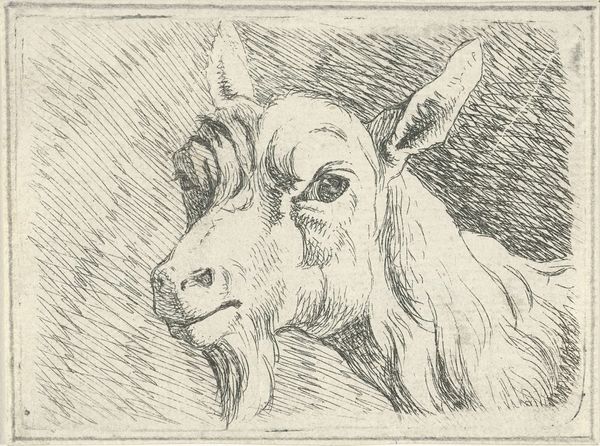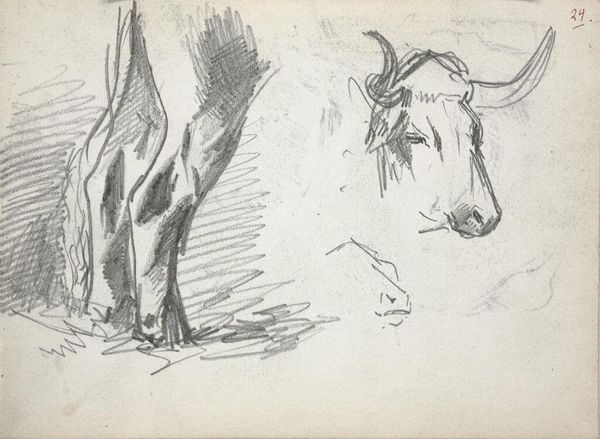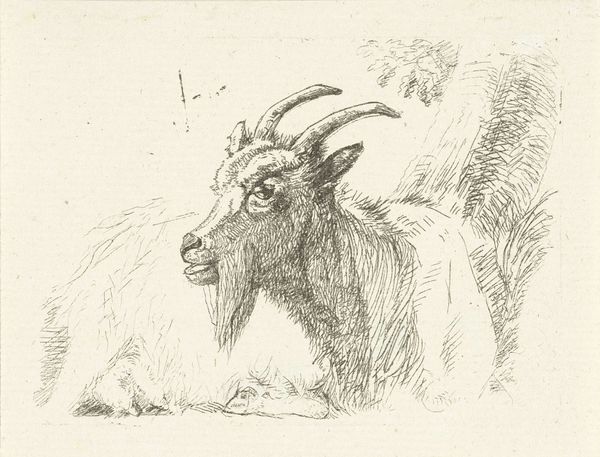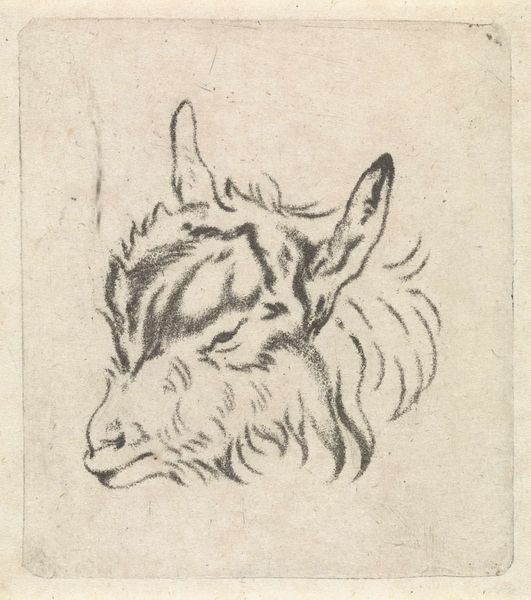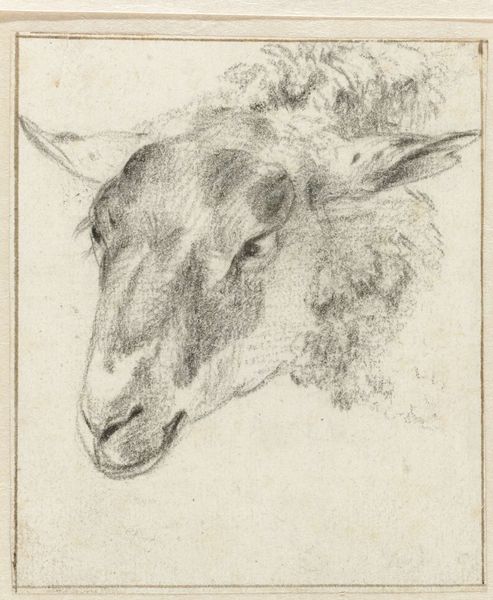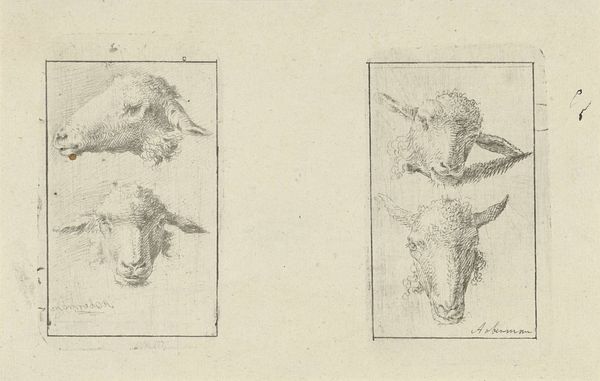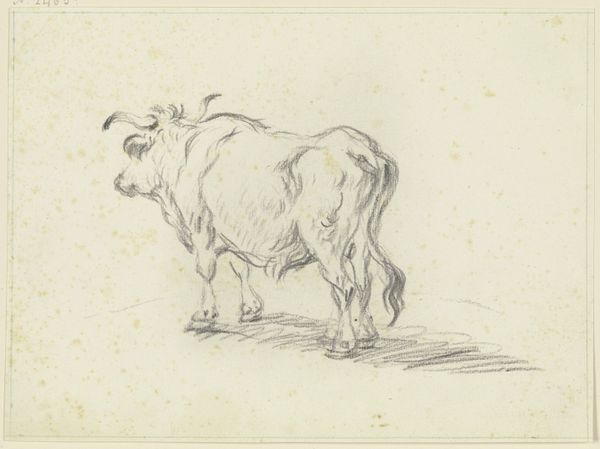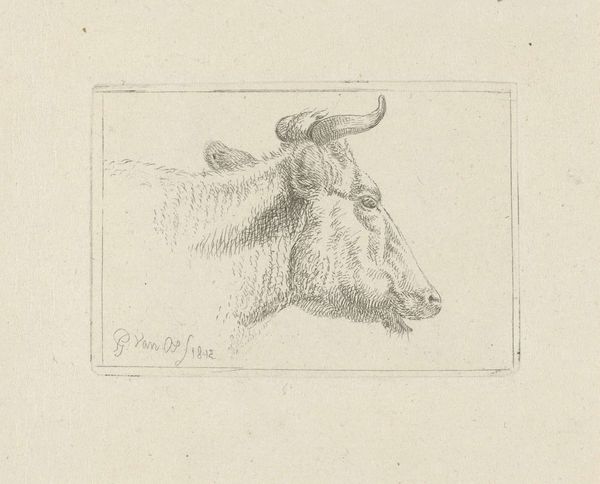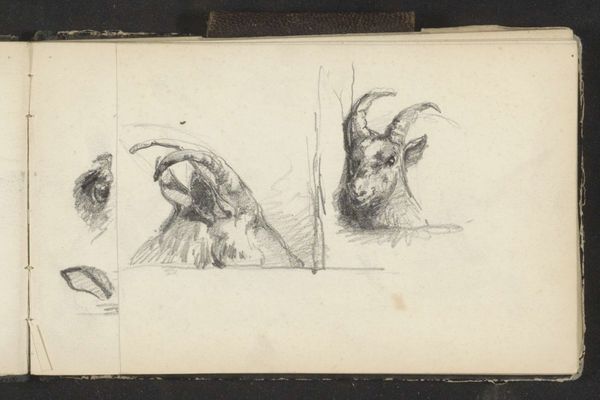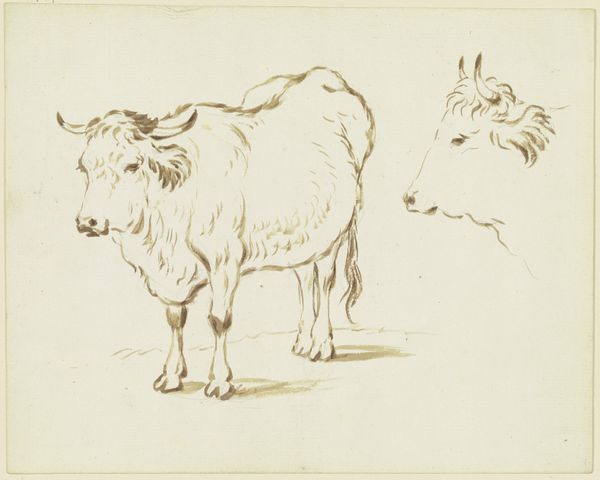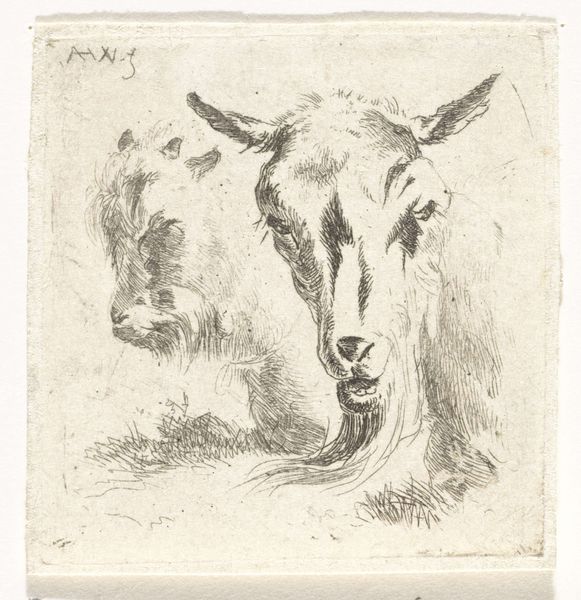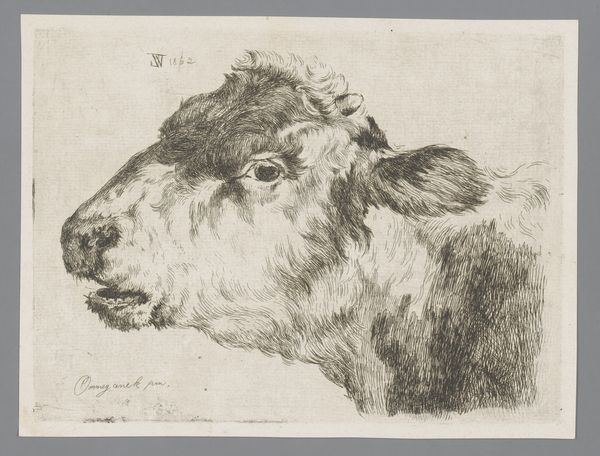
drawing, pencil
#
portrait
#
drawing
#
amateur sketch
#
light pencil work
#
pen sketch
#
pencil sketch
#
personal sketchbook
#
idea generation sketch
#
sketchwork
#
pen-ink sketch
#
pencil
#
sketchbook drawing
#
realism
#
initial sketch
Dimensions: height 72 mm, width 96 mm
Copyright: Rijks Museum: Open Domain
Editor: Here we have Hermanus Fock’s "Studieblad met bokkekop," a pencil drawing from 1786. There’s something incredibly intimate about the quick, light strokes. It feels like we’re looking at a page torn straight from the artist’s personal sketchbook. What story do you think this drawing tells? Curator: Well, considering Fock’s place in the late 18th century, these "study sheets" offer a valuable glimpse into the artistic process. The accessibility of pencil as a medium facilitated the rapid documentation of observations, but it also raises questions about artistic training and access to resources. Was this type of study typical of the time, and how does it compare to academic approaches? Is it a preparatory study for a larger work, or does it exist as a piece unto itself? Editor: That's a good question. The sketch itself suggests it could be a preliminary study, maybe for a painting with pastoral themes. Is there any way of knowing if this artist has completed artworks that portray a similar subject matter? Curator: Certainly, contextualizing the work with other artworks and drawings made by the same artist at the time could shed light on it, not only understanding his broader artistic concerns and recurring motifs but also to gain insights into the socio-political underpinnings of depicting animals like this. Were they purely aesthetic, or did they hold symbolic significance within the culture? The Rijksmuseum’s record may help with these details. Editor: That makes me think about how differently we view such sketches today versus when they were created. Now they're appreciated for their raw, immediate quality. Curator: Precisely. Shifts in aesthetic preferences impact how we engage with such works. Looking at "Studieblad met bokkekop" invites reflection on how art institutions shape the perceived value of seemingly ephemeral artistic gestures. Editor: So, considering how museums shape taste, appreciating it becomes more layered. I now view it differently; thanks! Curator: Indeed, examining this sketch as a product of its time, through the lens of the institutions that preserve and present it, offers a much deeper understanding.
Comments
No comments
Be the first to comment and join the conversation on the ultimate creative platform.
